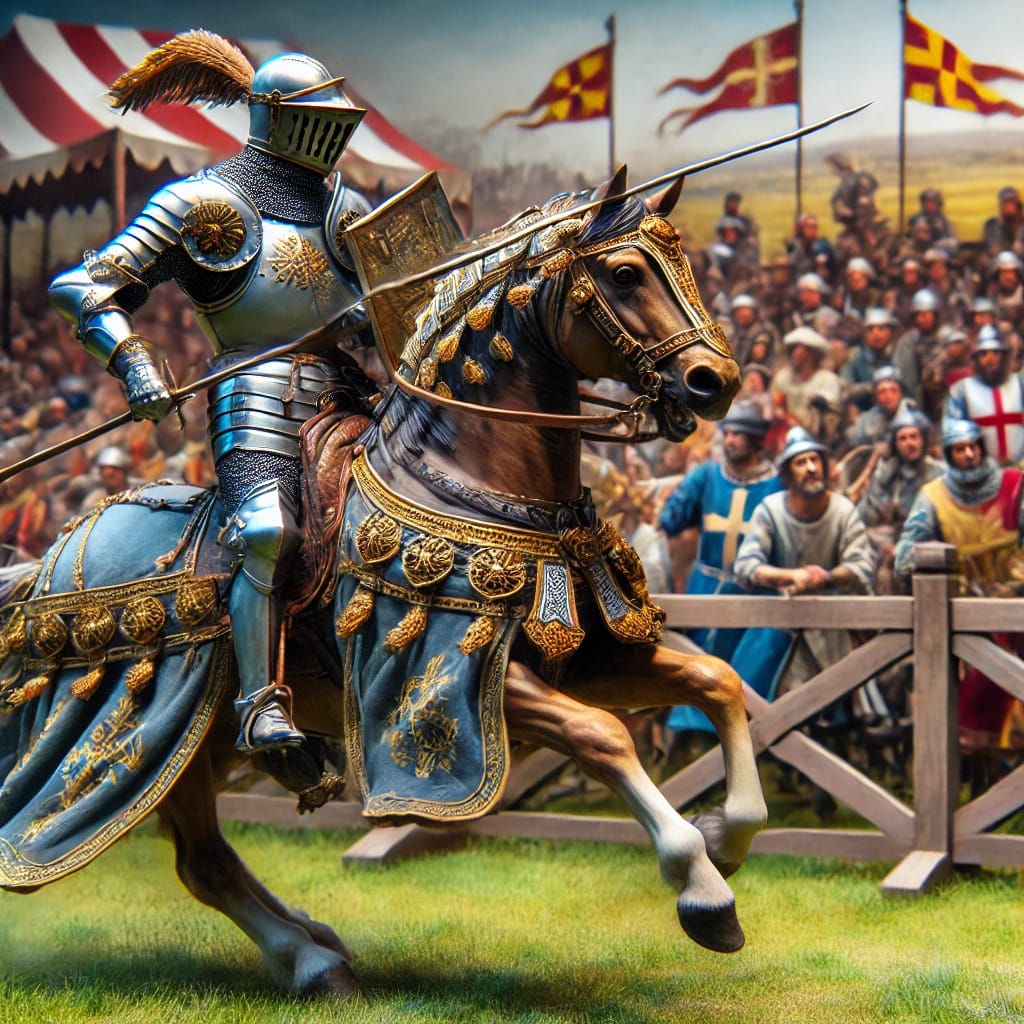
The Noble Horseback Warriors
The Middle Ages ushered in the age of the knight, a horseback warrior who symbolized the ideals of chivalry, bravery, and honor. Central to the knight’s prowess and prestige was his horse, a noble steed bred and trained for the rigors of battle and the grandeur of tournaments. This article explores the symbiotic relationship between knights and their horses, the meticulous training and care of war horses, and the vibrant tournaments that highlighted their equestrian skills.
The Relationship Between Knights and Their Steeds
Knights and their horses shared a bond forged through rigorous training and mutual dependence. The horse was not just a mode of transportation but a loyal companion and a vital component of the knight’s combat effectiveness. The destrier, the most renowned of medieval warhorses, was celebrated for its strength, agility, and courage. These horses were bred selectively to carry the weight of an armored knight while maintaining the stamina required for prolonged engagements.
Knights developed a deep affection and respect for their horses, recognizing their crucial role in battle. They were often given noble names and treated with great care and reverence. This relationship was so integral that a knight’s status and success were often measured by the quality and condition of his horse.
Training and Care of War Horses
Training a war horse, or “destrier,” began at a young age and was an intensive process. These horses were trained to remain calm in the chaos of battle, respond swiftly to commands, and perform complex maneuvers. Training included desensitization to the clamor of combat, including the sounds of clashing swords and shouting soldiers. Horses were also trained in “haute école” movements, which are advanced dressage techniques such as the levade, capriole, and courbette, essential for combat situations.
Care for these horses was meticulous. A typical care regimen included:
- Grooming: Regular grooming was essential to keep the horse’s coat healthy and free of parasites.
- Feeding: War horses were given a rich diet to maintain their strength, often including grains, legumes, and high-quality forage.
- Hoof Care: Blacksmiths, or farriers, were responsible for shoeing horses and maintaining hoof health, crucial for the horse’s performance and longevity.
- Veterinary Care: Although medieval veterinary knowledge was limited, knights employed various herbal remedies and basic medical practices to treat injuries and illnesses.
Tournaments: Showcasing Equestrian Skills
Tournaments were the medieval equivalent of modern-day sporting events, providing knights with the opportunity to demonstrate their prowess and valor in a controlled setting. These events were a blend of sport, spectacle, and martial training. The most popular forms of tournament events included:
- Jousting: Knights on horseback charged at each other with lances, aiming to unseat their opponent.
- Melee: Groups of knights engaged in mock combat, often reflecting the chaos of a real battlefield.
- Equestrian Displays: Knights showcased their skills in horsemanship, including precise riding techniques and intricate maneuvers.
Tournaments were not only a test of a knight’s martial skills but also an opportunity to gain fame, fortune, and favor. Victorious knights often earned substantial rewards, including money, land, and even noble titles.
Conclusion
The legacy of medieval knights and their warhorses remains a fascinating chapter in the history of equestrianism. The chivalric code and the bond between knight and steed highlight the importance of discipline, respect, and training in the equestrian world. Modern equestrians can draw inspiration from these historical practices, appreciating the deep connection between horse and rider that transcends time.
Whether you are a seasoned rider or a passionate enthusiast, the story of knights and their noble horses offers valuable lessons in the care, training, and celebration of our equine companions. As we continue to honor these traditions, we keep alive the spirit of chivalry and the enduring bond between horse and human.
Shop tip
Medieval knights and chivalry on Amazon
